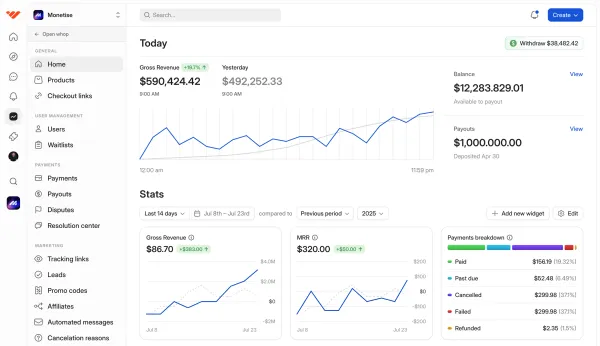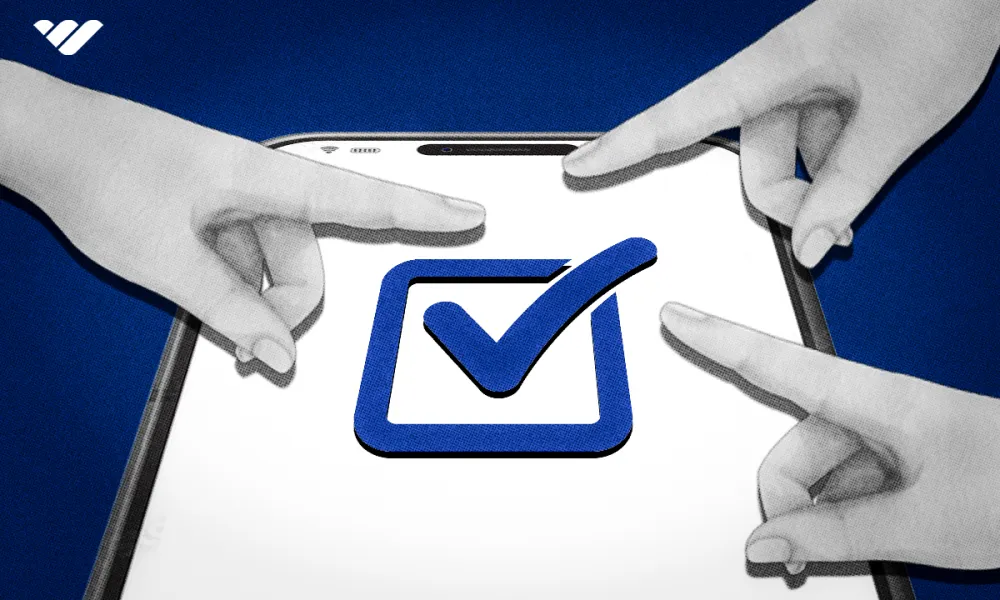Passive real estate investing lets you earn rental income and property appreciation without managing tenants or properties yourself. Learn how it works, the types of investments, and how to get started.
Key takeaways
- Passive real estate investing generates rental income without managing tenants or properties directly.
- Investment options include property managers, REITs, syndication, crowdfunding, and fractional ownership platforms.
- REITs offer high liquidity through stock markets while crowdfunding requires low capital.
- Real estate provides inflation hedging as property values historically rise with inflation.
- Location research and market fundamentals are critical before committing investment capital.
Passive real estate investing lets you earn rental income and property appreciation without managing tenants or day-to-day property tasks yourself.
By pooling your money into carefully chosen properties or funds, you can earn a steady monthly income and achieve long-term growth.
In this guide, we break down how passive real estate investing works and show exactly how you can get started, so you can start building wealth without becoming a full-time landlord.
What is passive real estate investing?
Passive real estate investing is a strategy that allows you to reap the rewards of real estate investment without the obligation to actively manage the property.
To put it simply, you’re able to earn an income from real estate without having to be a landlord.
This matters because being a landlord (especially a good one) takes a lot of work.
Active real estate investing comes with responsibilities like maintenance, repairs, and tenant screening.
Passive real estate investing, on the other hand, is all about low-maintenance income.
You invest capital, and it generates returns without ongoing management, portfolio trading, or day-to-day tasks. Your money works for you while you focus on other things.
Types of passive real estate investing
There are a few options if you want to become a passive real estate investor. They include:
1. Property manager
The closest option to traditional real estate investing, this one involves the direct purchase of a rental property before hiring a property manager to oversee operations and manage things on your behalf.
It will involve quite a lot of decision-making since you may want to set a certain limit on the property manager’s autonomy, and there’s also a significant amount of risk involved since you’re directly responsible for ownership and management.
It’s also possible to find turnkey properties that you can invest in this way, with many firms offering turnkey properties paired with a property manager or property management services. That means you don’t need to worry about filling vacancies or signing leases, although you’ll definitely want to put some effort into researching the property management firm itself.
- Ownership: Direct
- Liquidity: Medium
- Capital Outlay: Very high (buying entire properties yourself)
2. Real estate syndication
Syndication means joining together with other large parties to share investment risk, and it’s very possible to do this for the purpose of real estate investment. You’ll be pooling funds with other investors and letting one party manage the property, and the entire syndicate may be structured in different ways, such as a limited partnership.
One of the most common forms of real estate syndication you’ll see is the real estate investment group (REIG), and while going down this route can be highly profitable, you do need to be aware of the lower liquidity involved. Your money may be tied up in syndication for a lot longer than some of the other options.
- Ownership: Indirect
- Liquidity: Low
- Capital Outlay: High
3. Crowdfunding
Crowdfunding platforms allow you to buy in for as little as a couple of hundred dollars, a far cry from either of the two previous options.
That said, crowdfunded real estate investments are also illiquid, and your funds can be tied up for as long as it takes for the project to be seen through to completion.
Still, the amount of cash that’s getting tied up is much lower, which opens up potential for diversification—you can easily build up a passive real estate investment portfolio consisting of several crowdfunded projects as well as instances of the next two options on this list!
- Ownership: Direct
- Liquidity: Low
- Capital Outlay: Low
Check out Fundrise and CrowdStreet, two popular real estate platforms.
#4. Real estate investment trusts (REITs)
REITs have been around for a while, but they’ve become extremely popular in recent years thanks to the boom in online investing. A REIT is a company in itself, one whose sole purpose is to own, operate, or finance real estate.
The secret sauce here is that investors can buy shares in these companies just like any other exchange-listed stock, and thereby attain indirect exposure to the real estate owned by the company.
Granted, you get exposure to the real estate owned by any company when you buy their stock, but REITs are dedicated to maximizing the returns from the real estate under their umbrella, and often specialize in a certain type of real estate such as commercial, industrial, residential, etc.
Since you’re investing in REITs via the stock market, it’s an extremely liquid way to get involved, and 90% of the taxable income from the real estate is distributed in the form of dividends. However, there’s a lot less control over what specific pieces of real estate the company invests in, and stock market volatility can affect your investment.
- Ownership: Indirect
- Liquidity: High
- Capital Outlay: Low
#5. Fractional ownership
Crowdfunding and syndication also represent fractional ownership in real estate, but it’s worth mentioning separately because there are newer and innovative forms of fractional ownership starting to emerge.
Some real estate tokenization platforms allow you to directly own portions of specific properties, for example, and the most cutting-edge of these actually tokenize the properties using blockchain technology.
The benefit to the investor in this type of platform comes down mainly to transparency and security, but it’s also worth considering that blockchain tokens can be transferred easily—which solves the liquidity issue inherent to options like crowdfunding and syndication.
- Ownership: Direct
- Liquidity: Variable (high if tokenized)
- Capital Outlay: Medium
Why consider passive real estate investing?
Real estate is a basic human need (especially residential property), which means there’s always demand.
People need places to live, and as the population grows, that demand is unlikely to disappear. This makes real estate a fundamentally sensible investment.
Of course, it’s not risk-free.
History shows the dangers: the 2008 financial crisis was triggered in part by risky real estate lending and poor risk management.
Today, commercial real estate faces its own challenges – like the shift to remote work, reducing office demand.
Despite these risks, passive real estate investing offers a way to benefit from the long-term stability and income potential of real estate without taking on the daily responsibilities of being a landlord.
Benefits and risks of passive real estate investing:
Let’s take a look at some of the benefits and risks involved with passive real estate investing:
| Benefits | Risks |
|---|---|
| Passive income - Generates income without ongoing effort. Can supplement your primary income or become a full-time income stream. | Interest rate risk - Rising rates can increase financing costs, especially with variable loans. REITs and fractional ownership reduce this risk. |
| Growing your wealth - Passive income can be reinvested for compound growth. Real estate also appreciates over time. | Liquidity - Real estate is harder to sell quickly compared to stocks or bonds. REITs and tokenized properties offer more liquidity. |
| Hedging against inflation - Property values historically rise with inflation, protecting cash from losing value. | Property management and control - You rely on management firms; poor management can hurt returns. Direct control is limited. |
| Tax benefits - Potential deductions for depreciation, mortgage interest, and other property-related expenses. | Tenants - Tenant issues, such as late payments or vacancies, can affect income. Research tenant profiles and occupancy rates. |
| Diversify your portfolio - Real estate behaves differently from stocks and bonds, reducing portfolio risk. | Tax implications - While there are benefits, unexpected tax liabilities can arise. Consult a professional. |
| Professionally managed properties - Removes landlord responsibilities from your plate. | Volatility - Market trends, like remote work affecting office demand, can create instability in returns. |
| Regulatory changes - Property laws and regulations can impact property values and investment returns. |
What to consider when investing in real estate
Passive real estate investing isn’t as straightforward as picking stocks.
There are multiple factors to weigh before committing capital. Here’s a primer on what to focus on:
Read more:
Market conditions:
- Passive real estate investing is a medium to long-term strategy.
- Study the property market fundamentals and long-term trends.
- Evaluate tenancy rates, economic indicators, and market health.
- Understanding the market context helps you analyze individual properties effectively.
Location, location, location:
- A great property in the wrong area can underperform.
- Assess the neighborhood’s economic health, employment rates, and resident demographics.
- Research future development plans, as gentrification can boost value, but decline is also possible.
- Local regulations and zoning laws can impact property performance.
Property type:
- Different types (residential, commercial, industrial, retail) have unique markets.
- Residential properties are generally stable, while commercial properties can yield higher returns but carry more risk.
- Consider specializing in one type or diversifying across a few to balance stability and income.
- REITs often focus on one property type for this reason.
Laws and politics:
- Legal and regulatory frameworks are critical: zoning laws, property rights, and local regulations must be followed.
- Regulatory or political shifts can affect property values and rental income.
- Ensure property managers are compliant and aware of any changes.
Your style and strategy
- Align your investments with your financial goals and risk tolerance.
- Options range from buying managed properties with loans to gradually investing in REITs.
- Decide whether you prefer long-term stability or higher potential returns with higher risk.
How to start passive real estate investing in 8 simple steps
| Step | Action | What to Do |
|---|---|---|
| 1 | Analyze your situation | Assess your finances, liabilities, income, expenses, and credit score. Decide whether you'll invest disposable income, borrow, or use inheritance. |
| 2 | Set goals | Define your investment objectives: steady passive income, long-term capital growth, or a mix. Factor in your risk tolerance. |
| 3 | Study the market | Understand property types, locations, and market dynamics. Join real estate investing communities for insights. |
| 4 | Develop a strategy | Choose your investment method (REITs, syndication, tokenization), select locations and property types, and identify brokers or platforms. |
| 5 | Do your due diligence | Deep dive into your chosen strategy: visit areas, check REIT performance, verify platforms and representatives. |
| 6 | Consult professionals | Talk to financial advisors, tax professionals, or fiduciaries to identify blind spots and gain confidence. |
| 7 | Begin execution | Start investing according to your strategy. For REITs or crowdfunding, consider easing in gradually. |
| 8 | Monitor and re-evaluate | Regularly review investment performance, adjust strategy if needed, and align with evolving financial goals. |
How to know if your passive real estate investment is performing well
Since passive real estate investments can be pretty nuanced, here are a few things to look out for:
| Metric / Indicator | What to Monitor | Why It Matters |
|---|---|---|
| Total Returns | Calculate income + property appreciation - costs. | Shows the overall performance of your investment compared to other options. |
| Occupancy Rate & Rent Growth | Track how full rental properties are and how rent changes over time. | Indicates rental health and market demand. |
| Capitalization Rate (Cap Rate) | Compare net operating income to property value. | Helps measure profitability and compare properties objectively. |
| Risk-Adjusted Returns | Factor in risk levels of different properties. | Ensures you're getting appropriate returns relative to the risk taken. |
| Fees and Costs | Keep tabs on management fees, maintenance, and other expenses. | Prevents costs from eroding your net returns. |
| Funds From Operations (FFO) - REITs | Monitor FFO if investing in REITs. | Measures earnings, similar to stock dividends, indicating REIT performance. |
Start your real estate journey with Whop's investing communities
Passive real estate investing takes research and care, but the rewards can be huge.
Real estate has forever been a top investment, and going the passive route means you earn without managing properties or tenants yourself.
The fastest way to get up to speed? Join a community of like-minded investors.
From seasoned pros to fellow learners, Whop’s investing and real estate communities give you guidance, insights, and support every step of the way.
Dive in today and start learning (and earning) with Whop.
FAQs
What is the easiest passive real estate investing strategy?
REITs are the easiest passive real estate investing strategy thanks to how many brokerage platforms there are and how accessible they are. As long as you’re of age and your financial situation is in order, you should be able to buy into REITs with a minimum of fuss.
What’s the risk of passive real estate investment?
There are a lot of risks when it comes to passive real estate investment, just like with any other investing style or asset class. There can be tax implications, market volatility or outright crashes such as in 2008, regulatory risks, and tenant risks even though you’re not actively managing the properties you’re investing in.
Does passive real estate grant tax advantages?
Yes, you may be able to get deductions on mortgage interest and depreciation.
How much do I need to get started?
This depends on what type of investing you’ll be doing. You can buy into REITs or crowdfund with a couple of hundred bucks, but fractional ownership could range to four or five figures depending on the platform you choose.







![80 remote side hustles to make money from anywhere [2026]](/blog/content/images/size/w1000/2025/11/tablet-designer-home-opt.webp)







